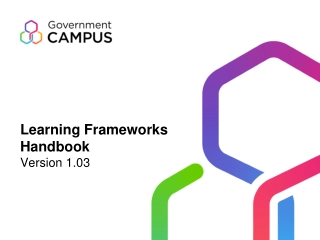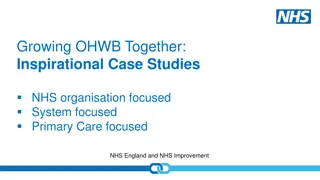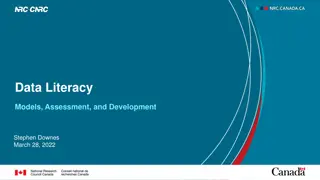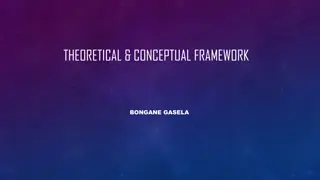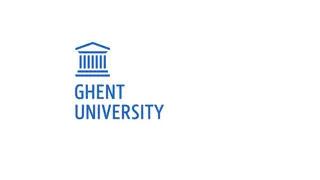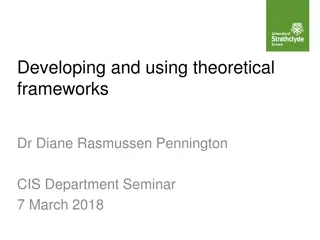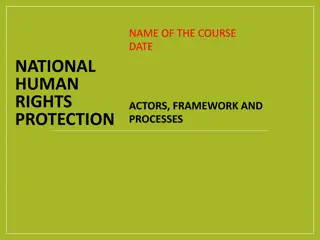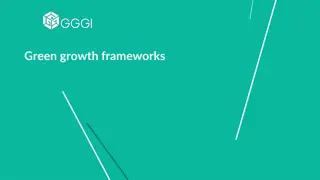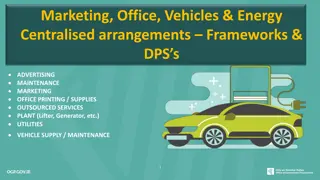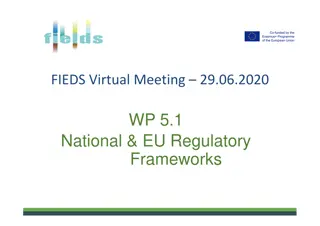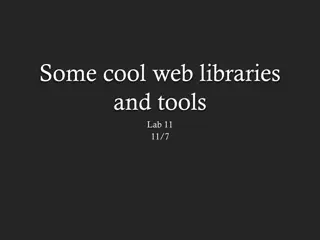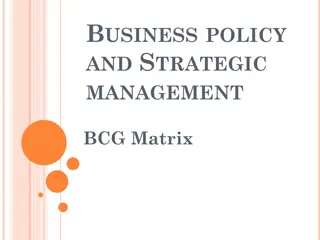Understanding Knowledge Management: Processes and Frameworks 2. In knowledge management, organizations create, share, and manage knowledge to enhance performance. It involves acquiring different types of knowledge through various means, such as perc
Knowledge Management, Organizational Objectives, Types of Knowledge, Tacit Knowledge, Explicit Knowledge
Download Presentation

Please find below an Image/Link to download the presentation.
The content on the website is provided AS IS for your information and personal use only. It may not be sold, licensed, or shared on other websites without obtaining consent from the author. Download presentation by click this link. If you encounter any issues during the download, it is possible that the publisher has removed the file from their server.
E N D
Presentation Transcript
Knowledge management (KM) is the process of creating, sharing, using and managing the knowledge and information of an organization. It refers to a multidisciplinary approach to achieve organizational objectives by making the best use of knowledge. Knowledge Management is a process of identifying, capturing, organizing and disseminating the intellectual assets of that are critical to the organization s long term performance
Knowledge is a familiarity, awareness, or understanding of someone or something, such as facts (propositional knowledge), skills (acquaintance knowledge). By most accounts, knowledge can be acquired in many different ways and from many to perception, reason, memory, testimony, scientific inquiry, education, and practice. (procedural knowledge), or objects sources, including but not limited
Different frameworks for distinguishing between different 'types of' knowledge exist. One proposed framework for categorizing the dimensions of knowledge distinguishes tacit knowledge and explicit knowledge. Tacit knowledge represents internalized knowledge that an individual may not be consciously aware of, such as to accomplish particular tasks. At the opposite end of the spectrum, explicit knowledge represents knowledge that the individual holds consciously in mental focus, in a form that can easily be communicated to others.
Tacit knowledge or implicit knowledge (as opposed to formal, codified or explicit knowledge) is the kind of knowledge that is difficult to transfer to another person by means of writing it down or verbalizing it. Explicit knowledge (also expressive knowledge)is knowledge that can be readily articulated, codified, stored and accessed. It can be easily transmitted to others. Most forms of explicit knowledge can be stored in certain media. Explicit knowledge is often seen as complementary to tacit knowledge.
Ikujiro Nonaka proposed a model (SECI, for Socialization, Externalization, Combination, Internalization) which considers a spiraling interaction between explicit knowledge and tacit knowledge. The organization, capture, use, and analysis of the impact of a group's collective knowledge.
The knowledge management (KM) represents solutions that streamline the process of capturing, distributing, and effectively using knowledge. When an organization is able to easily access, share, and update business knowledge, it can become more productive and cost-efficient. The ability to access the right knowledge at the right time, via a robust knowledge management system, informs accurate decision-making and stimulates collaboration and innovation.
A McKinsey Global Institute Report indicates that a robust knowledge management system can reduce information search time by as much as 35 percent and raise organization-wide productivity by 20 to 25 percent. Findings culled from the International Data Corp also corroborates the value of a knowledge management system, highlighting that Fortune 500 companies lose roughly $31.5 billion a year by failing to share knowledge.
As your enterprise grows, so too will the need to access a reliable knowledge database in order to effectively run your business, serve your clients, and increase revenue. Without a knowledge management system in place, your employees will be forced to learn and relearn processes and information. That s an inefficient and costly practice. Plus, you may also run the risk of losing those processes or information if a knowledge leader or legacy employee leaves your company.
Knowledge is one of your organizations most valuable assets. Storing, growing, and sharing that knowledge is critical to any enterprise. Disseminating information throughout your organization is much easier when you have a reliable knowledge management platform to serve a full range of needs -- both at a departmental level and a holistic, company-wide level.
EXAMPLES Document management: These systems act as centralized digital filing cabinets for company documents. They make retrieving documents easy, support regulatory compliance, and enhance workflow. In addition, when a document management system is enhanced with passwords and backup procedures, document security is enhanced, but not thoroughly protected from outside access. Many typical document management systems have functionality limitations so custom upgrades can increase costs. This type of system does not automatically capture data or analyze it.
Content management: Content management systems are similar to document management systems, but store audio, video, and other media types in addition to documents. Databases: A database is a computer application that allows people to capture, store, analyze, and interact with data. Databases are indexed in order to make information more accessible. Data stored in databases can be very secure because the system prohibits manipulation. However, they can be volatile and are often costly to design and set up. They also require a high level of skill to use and maintain.
Data warehouses: These enterprise-wide systems pull data from different parts of your organization and can be highly effective for reporting and analysis. They store current, as well as historic data and transform data into meaningful information. However, data warehouses are typically high-maintenance systems which require complex integration in order to provide a unified view of the data.
Intranets: These private computer networks built on searchable platforms can provide an easily accessible resource for information that enhances collaboration and social networking within your enterprise. But intranets do have some risks, including easy access by unauthorized personnel. In addition, they are costly and time-consuming to maintain.
Wikis: These web pages are easy-to-use collaborative tools that allow anyone to publish and store information in a central location. They can be good places to maintain business documents or product catalogues. However, because they can be openly edited, wikis can often include wrong information. In addition, they aren t optimized to show what information within them is being viewed or used or where knowledge gaps exist.
Social networking: Social networking allows people to connect with each other, join groups, contribute information, and discuss issues they are interested in. Social networking can influence organizational knowledge. Knowledge management systems can apply social networking to identify, document, and transfer knowledge.
Benefits of knowledge management The more effectively and efficiently a company shares its information with its employees, the better the business will perform. The benefits of knowledge management include: Faster decision-making Efficient access to knowledge and information Increased collaboration and idea generation Enhanced communication throughout your organization Improved quality of information and data More security for intellectual property Optimized training


